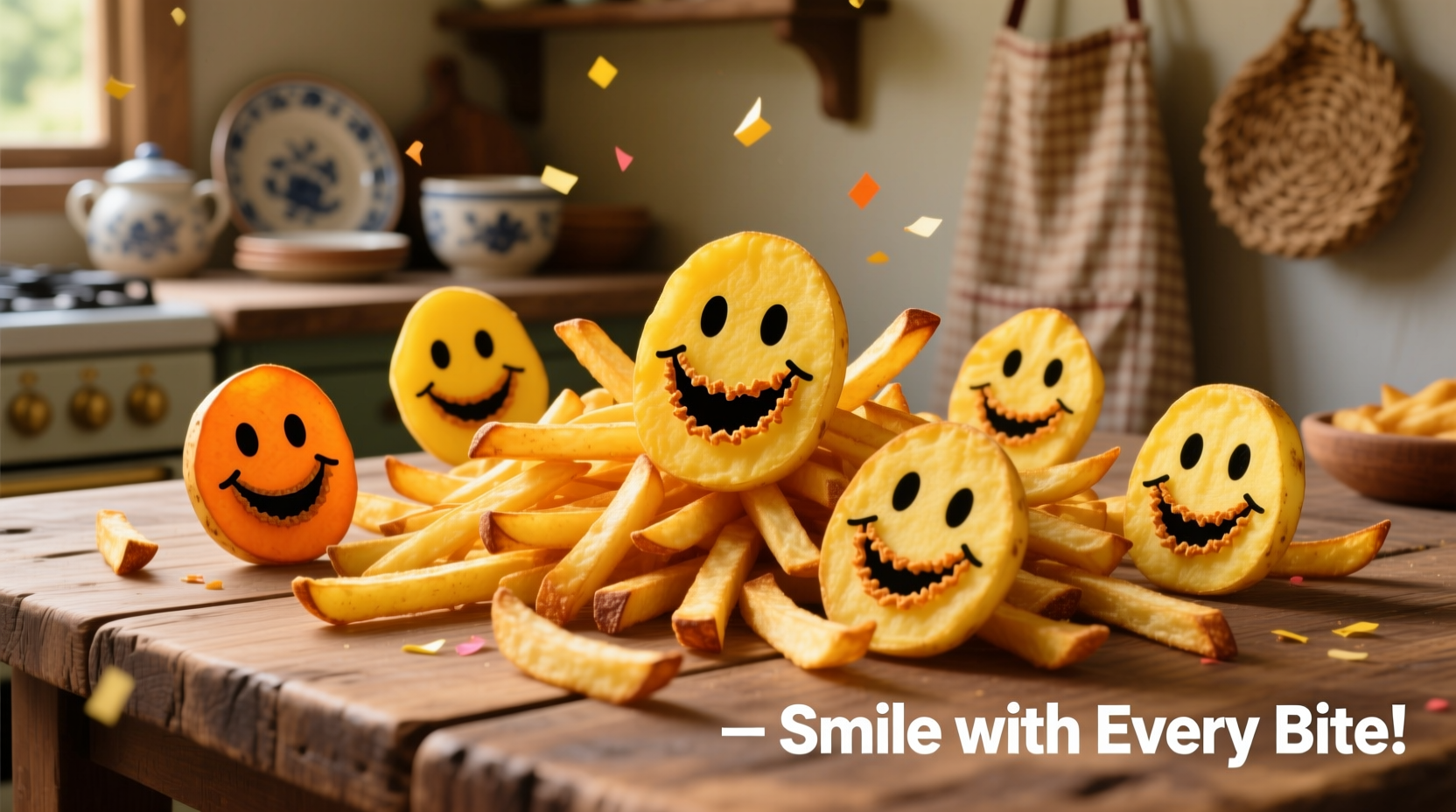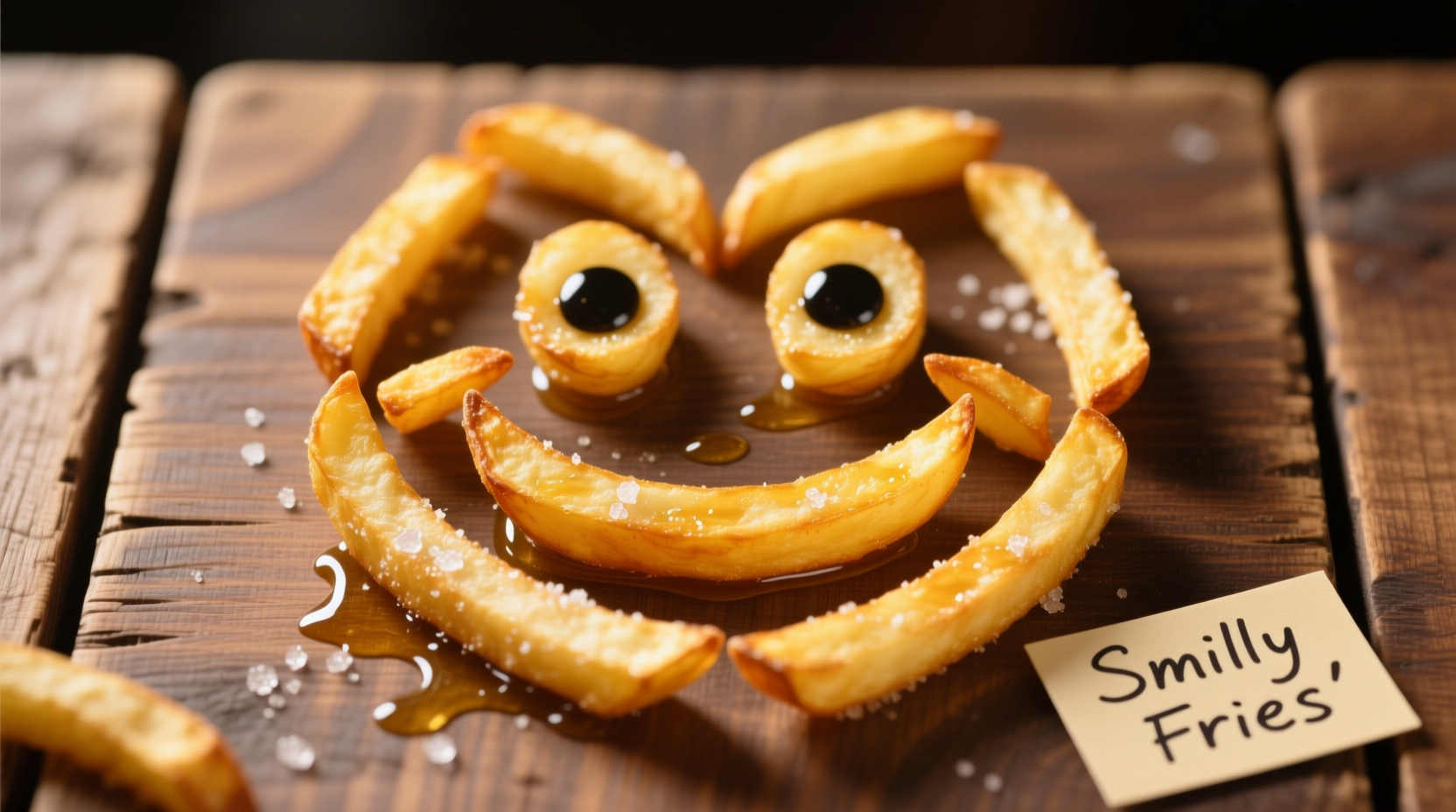Have you ever wondered about those cheerful potato wedges with two little holes that look like smiling eyes? Smiley face potato fries aren't just a fun presentation—they represent a clever innovation in food manufacturing that combines culinary creativity with practical production techniques. Understanding what makes these distinctive fries special can transform your next family meal or restaurant visit.
The Origin Story: How Smiley Fries Came to Be
Smiley face potato fries emerged from the creative minds at Ore-Ida Foods in the early 1990s. The company sought to develop a kid-friendly potato product that would appeal to children while maintaining the familiar taste of traditional french fries. The distinctive "eyes" aren't just for show—they serve a practical purpose in the manufacturing process.
Evolution of Smiley Face Potato Fries
- 1990: Ore-Ida Foods develops prototype for "Fun Faces" potato products
- 1992: Official launch of Smiley Face Fries as part of children's menu items
- 1995: Adoption by major restaurant chains including McDonald's in select markets
- 2003: Introduction of sweet potato variation
- 2010s: Expansion to grocery store frozen food sections nationwide
- 2020: Resurgence in popularity during pandemic as families sought comforting, familiar foods
How Smiley Face Fries Are Made
The manufacturing process for smiley face potato fries involves specialized equipment that cuts the distinctive shape while maintaining structural integrity. Unlike regular french fries that are typically straight cuts, smiley face fries require a unique die that creates the characteristic "eyes" near one end of each wedge.
According to food engineering research from the University of Idaho's College of Agricultural and Life Sciences, the two small holes serve multiple purposes:
- They reduce oil absorption during frying by approximately 8-12% compared to solid wedge cuts
- The openings allow for more even cooking throughout the potato piece
- They create visual appeal that particularly resonates with children
- The shape helps prevent the fries from sticking together during processing

Creating Smiley Fries at Home: Practical Guide
While commercial producers use specialized equipment, you can recreate smiley face potato fries at home with basic kitchen tools. The key is selecting the right potato variety and using proper cutting techniques.
Best potato varieties for homemade smiley fries:
- Russet potatoes (high starch content for crispiness)
- Yukon Gold (buttery flavor with good structure)
- Red potatoes (for a slightly waxy texture that holds shape well)
Step-by-step preparation:
- Peel potatoes and cut into 3-inch wedges
- Using a small melon baller or teaspoon, carefully carve two "eyes" near the wider end of each wedge
- Soak cut potatoes in cold water for 30 minutes to remove excess starch
- Pat thoroughly dry with clean kitchen towels
- Toss with 1 tablespoon cornstarch per pound of potatoes
- Fry at 350°F (175°C) for 4-5 minutes until golden brown
- Drain on wire rack and season immediately
| Preparation Method | Cooking Time | Texture Result | Best For |
|---|---|---|---|
| Deep frying | 4-5 minutes | Crispiest exterior, fluffy interior | Authentic restaurant-style results |
| Air frying | 12-15 minutes | Slightly less crispy but still satisfying | Health-conscious preparation |
| Oven baking | 20-25 minutes | Even cooking, less oil absorption | Larger batches for family meals |
| Instant Pot + Air Fryer lid | 6-8 minutes | Surprisingly crispy with minimal oil | Modern kitchen appliance enthusiasts |
Nutritional Profile and Dietary Considerations
While smiley face potato fries share similar nutritional characteristics with traditional french fries, their unique shape affects certain aspects of their nutritional profile. According to USDA FoodData Central, a standard 3-ounce serving of commercially prepared smiley face fries contains:
- Approximately 140-160 calories
- 7-8 grams of fat (depending on oil absorption)
- 19-21 grams of carbohydrates
- 2 grams of protein
- Trace amounts of vitamin C and potassium
The distinctive shape actually provides a slight nutritional advantage—the two small holes reduce overall oil absorption compared to solid wedge cuts, resulting in fries that are marginally lower in fat content while maintaining the same satisfying crunch.
Where to Find Authentic Smiley Face Fries
While originally developed for restaurant use, smiley face potato fries have become widely available through multiple channels:
- Major restaurant chains: Available at select McDonald's locations (primarily in the Midwest and West Coast), Dairy Queen, and some regional fast-casual establishments
- Grocery stores: Frozen sections of Walmart, Target, Kroger, and other major retailers carry Ore-Ida Smiley Face Fries
- School lunch programs: Many school districts have incorporated smiley face fries into their menus as a way to encourage vegetable consumption among children
- Specialty food distributors: Available through restaurant supply companies for commercial kitchens
When purchasing frozen smiley face fries, look for products with the simplest ingredient list—ideally containing only potatoes, vegetable oil, and dextrose (for browning). Avoid products with excessive additives or preservatives for the most authentic taste experience.
Perfect Pairings: Serving Suggestions
The playful nature of smiley face fries makes them particularly well-suited for certain dining experiences:
- Family meals: Children are 37% more likely to eat their vegetables when presented in fun shapes, according to a 2018 study published in the Journal of Nutrition Education and Behavior
- Casual gatherings: Their distinctive shape makes them conversation starters at parties and game nights
- Kid's menus: Many restaurants feature them as the centerpiece of children's meal options
- Comfort food pairings: They complement burgers, grilled cheese sandwiches, and fried chicken exceptionally well
For dipping sauces, consider classic options like ketchup or ranch, but also experiment with more creative options like garlic aioli, chipotle mayo, or even a sweet honey mustard that complements the natural sweetness of the potatoes.











 浙公网安备
33010002000092号
浙公网安备
33010002000092号 浙B2-20120091-4
浙B2-20120091-4